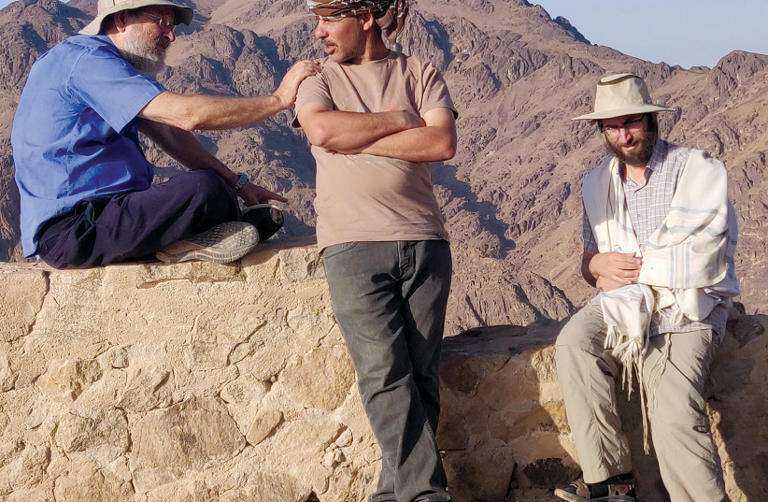on
BY SIMONE J. SMITH
For false Christ’s and false prophets will arise and perform great signs and wonders, so as to lead astray, if possible, even the elect.
Matthew 24:24
This article I am dedicating to my religious leaders. I am dedicating it to my religious leaders because it is time to take a stand. The world has become a stage show for the ushering of something very dark, and sinister. It began with the introduction of the global vaccine movement, and it has now crept into the sphere of our religious convictions.
From November 6th to the 18th, 2022, world leaders gathered for the United Nations COP27 Climate Change Summit in Sharm El Sheikh. Representatives of major Christian and Islamic denominations joined forces to unveil what they hoped would be the new and improved moral code of the future.
The Secretary-General has said COP27 must deliver a “Down-payment” on climate solutions that match the scale of the problem,” and asked, “Will leaders deliver?”
COP27 includes technical discussions to specify the way in which nations should practically measure their emissions so there’s a level playing field for everyone. They had some key discussion points:
- Mitigation: How are countries reducing their emissions?
- Adaptation: How are countries going to adapt and help others do the same?
- Climate Finance: The elephant that never leaves the negotiation room
- What is this loss and damage issue we hear so much about?
- How is the war in Ukraine affecting all of this?
- Will civil society participate at COP, or just delegates
Then, there was one more item; after worldwide criticism, it was reported that they ushered in the new Ten Commandments, which were reframed as “Ten Principles of Climate Repentance.”
I know right now you might be asking what the heck I am talking about, so let me share a little bit more.
The Elijah Interfaith Institute developed these principles during COP27; they were adapted by Rabbi Jonathan Wittenberg, and read on Skirrid Fawr (Ysgyryd Fawr) – The Holy Mountain. It was called “The return to Mount Sinai – a Prophetic Call for Climate Justice and Ceremony of Repentance.”
The 10 Spiritual Principles for Climate Repentance prompts religious leaders to call for a re-examination of deep-seated attitudes and identifying ways to transform people’s attitudes toward the well-being of Earth, mankind’s common home. The claim that the ecological crisis is now a spiritual crisis, and we need to consider how we deal with the on-going destruction of Planet Earth, our home. They presented the question, “When will religion – the sleeping giant – wake up to address the ecological crisis?”
According to the over 40 religious leaders who attended the conference, there is the urgent work of addressing the practical challenges of climate change and for negotiating between nations, in an attempt to help humanity resolve the climate crisis.
As religious leaders, they were offering their voices as a contribution to the gathered leaders and to humanity. It was to be a voice of hope and unity, grounded in a spiritual vision. They wanted to confront the destructive habits, which continue to limit the possibilities and the hopes of human beings, in a call for wake up, and self-examination.
With the following ten principles, they are seeking to initiate a process of climate repentance, broader understanding, and effective action. Many practical consequences can be derived from the vision set forth here, as well as from the individual principles they offer.
Their call is a call to action; and a call to return to a correct vision of the creation, the creator, and the harmonious relationship of humanity with creation.
Below are the amended commandments:
Commandment One
Creation is not our possession.
Humanity takes its rightful place as partner and co-creator
Commandment Two
We must treat all of life with reverence.
Creation is not simply external to God. It is, in significant ways, permeated by God’s presence and being, manifesting the divine agency and reality.
Commandment Three
We must care for each other and the planet.
All are part of a greater whole wherein each element both receives and gives influence, impact, love, and growth.
Commandment Four
We recognize that we are responsible for the wellbeing of all life today, as well as for future generations.
This finds two prominent expressions:
- Commitment to not harm creation, and the responsibility to protect it.
- Commitment to serve, advance, and aid in the growth and evolution of all parts of creation.
Commandment Five
A disciplined spiritual life is helpful in overcoming the challenges of climate change.
The soul, or the higher aspects of the human person, has the capacity to realize the fuller vision of humanity’s role in the broader scheme of the meaning of life and creation.
Commandment Six
Use thought, speech and action only for the good.
There is an inherent relationship between the human person (within) and nature and objective reality (without).
Commandment Seven
The human person is benefitted by the on-going effort to purify, raise, and transform himself, in view of a higher vision.
Based on this understanding of the human person and his/her role in creation, the processes of growth, transformation, return and repentance are fundamental to human existence.
Commandment Eight
Act knowing that every action counts.
There are reactions when we harm the earth and others. Actions have consequences and no action can be ignored. The weight of our actions and their short and long term consequences lead us to find ways of mitigating harmful actions and to work for the good.
Commandment Nine
Take seriously the lessons and observations that humanity has reached by application of its mind in scientific study and through common reason.
Commandment 10
Be sensitive to the intolerable insecurities and injustices in which so many of our fellow-humans live.
Compassion means suffering with others—to feel the pain of the earth, of the poor, and of those who suffer the consequences of climate change. Opening our hearts to their pain will lead us to change.
So what are your thoughts community? Does this sit right with you? I would love to hear your thoughts, speculations, challenges or opinions on this issue.
Stay in the loop with exclusive news, stories, and insights—delivered straight to your inbox. No fluff, just real content that matters. Sign up today!
We, as humans are guaranteed certain things in life: stressors, taxes, bills and death are the first thoughts that pop to mind. It is not uncommon that many people find a hard time dealing with these daily life stressors, and at times will find themselves losing control over their lives. Simone Jennifer Smith’s great passion is using the gifts that have been given to her, to help educate her clients on how to live meaningful lives. The Hear to Help Team consists of powerfully motivated individuals, who like Simone, see that there is a need in this world; a need for real connection. As the founder and Director of Hear 2 Help, Simone leads a team that goes out into the community day to day, servicing families with their educational, legal and mental health needs.Her dedication shows in her Toronto Caribbean newspaper articles, and in her role as a host on the TCN TV Network.












